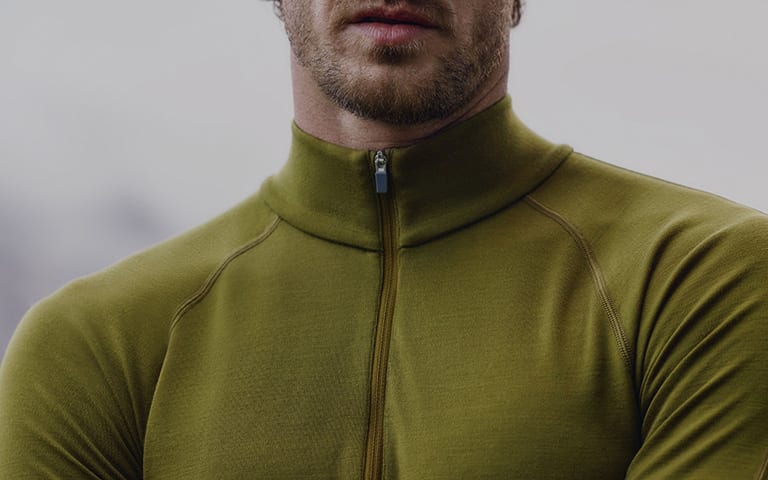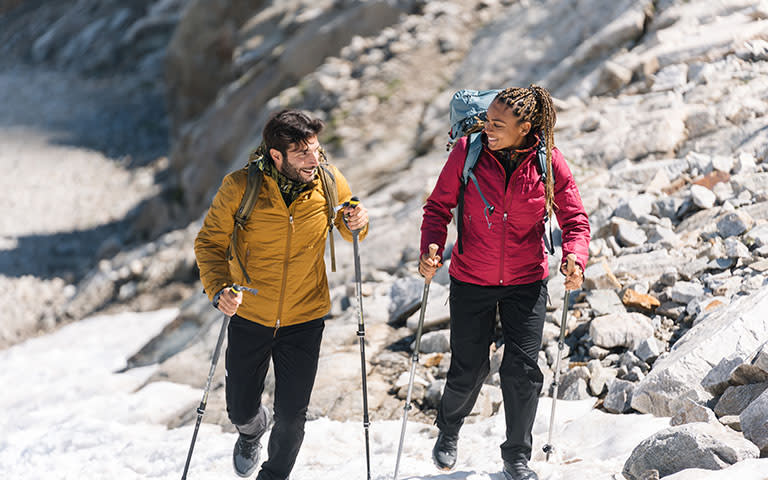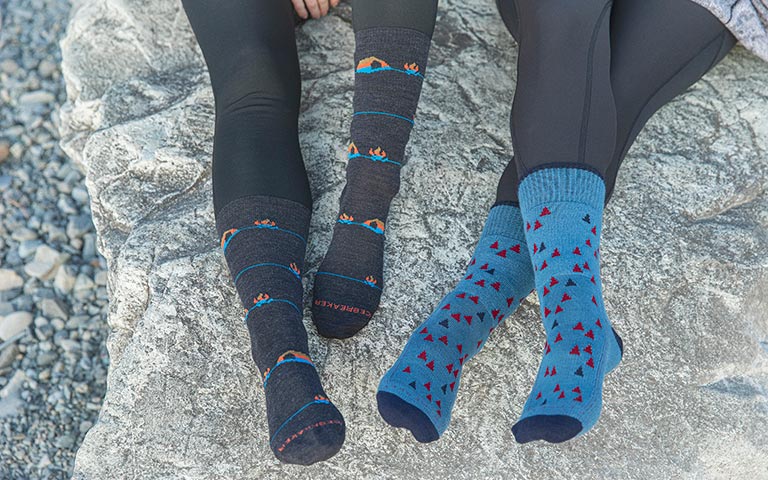Is Merino Wool Good for Backpacking?
January 9, 2025 | icebreaker
When it comes to backpacking, the gear you choose can make or break your adventure. Every decision matters, from the pack you carry to the clothes on your back. Among seasoned backpackers, one fabric consistently stands out: merino wool. Known for its exceptional performance, natural versatility, and comfort, merino wool has earned its place as an essential material for the trail.
What Makes the Best Backpacking Attire?
Choosing the right attire for hiking in the outdoors is about more than just comfort-it’s about performance, versatility, and durability. When your clothing works with you, not against you, it can make all the difference on the trail. Here’s what to look for when building your backpacking wardrobe:
• Lightweight and Packable: Backpacking requires every item in your pack to justify its weight. Choose clothing made from lightweight, compressible fabrics that deliver maximum functionality without adding bulk. Compact gear saves space and energy on the trail.
• Temperature Regulation: Fluctuating temperatures are part of the adventure. Select layers designed to trap heat in colder conditions and allow airflow during warmer periods. Thermoregulating fabrics help maintain comfort no matter the weather.
• Moisture Management: Staying dry is essential for avoiding discomfort and preventing issues like chafing. Choose quick-drying materials that manage moisture away from your body, ensuring you stay comfortable even in humid or rainy conditions.
• Odor Resistance: Long days on the trail often mean limited opportunities to change or wash clothes. Look for fabrics with natural or treated antimicrobial properties that inhibit odor-causing bacteria, keeping you fresher for longer.
• Durability: Rugged terrain and extended use require clothing that can handle wear and tear. Opt for high-quality, abrasion-resistant fabrics with reinforced seams to ensure your gear lasts through the toughest adventures.
• Versatility: Efficient backpacking attire serves multiple purposes. Prioritize clothing that transitions seamlessly between activities, weather conditions, and settings, such as a single base layer that functions as activewear and camp wear.

Why Merino Wool is Better in the Backcountry
Merino wool is well known for its unique properties that make it a popular choice for outdoor enthusiasts. Unlike cotton or synthetic materials, merino wool offers a combination of breathability, insulation, and odor resistance that makes it suitable for a wide range of conditions. Whether you’re enduring a long day in the heat or facing a chilly mountain morning, merino wool performs well across diverse climates.
Lightweight Packing
One of the primary advantages of merino wool is its versatility-you only need one shirt for the entire journey. Avid hiker Cam Bostock. explains that, for new hikers, one of the biggest mistakes is packing multiple sets of clothing: “The most common mistake I see for newer hikers is bringing multiple sets of clothes on trail. It’s a ton of wasted weight, and you really only need one set.”
The key, Cam adds, is choosing a high-quality hiking shirt that is versatile, comfortable, and stays fresh longer. He recommends the icebreaker 100% merino tee, noting how it provides warmth during cooler parts of the day and stays breathable when things get sweaty.
Performance in Varied Weather Conditions
Another key factor that makes merino wool ideal for backpacking is its performance in a range of temperatures. Cam points out that merino wool is “known for keeping much fresher, for much longer than any cotton shirt or sportswear. It’s also warm enough for cooler conditions and super breathable for when things get hot and sweaty.”
This balance of insulation and breathability allows backpackers to carry fewer clothing layers, knowing that a merino wool base layer can adapt to changing conditions throughout the day.
Odor Resistance
Merino wool also stands out for its ability to stay odor-free, even after multiple days of wear-a quality that’s critical for long backpacking trips. Outdoorsman Moritz Krause shared his experience wearing the same merino wool shirt for 14 days, saying, “I realized wow, I really didn’t wash my t-shirt one single time, and it still feels and smells like new.”
Unlike synthetic shirts, which can start to develop unpleasant odors after just one or two uses, merino wool retains its freshness for much longer. This means fewer clothes to pack, which helps keep your pack light and your journey more comfortable.
Merino Wool Hiking FAQs
Q: What percentage of merino wool is best for hiking socks?
A: For hiking socks, a blend of 40-80% merino wool is ideal. This ensures optimal comfort, breathability, and odor resistance, while the remaining fibers provide durability and stretch for long-lasting performance on the trail.
Q: Is merino wool worth it for hiking?
A: Merino wool is prized for its performance in outdoor activities like hiking. It regulates body temperature, manages moisture, resists odors, and provides comfort in a wide range of conditions. Its durability and ability to stay fresh after multiple wears make it a valuable investment for hikers.
Q: How long does merino wool last?
A: With proper care, merino wool garments can last for years. Its natural fibers are highly durable, resistant to wear, and maintain their shape over time. Washing on a gentle cycle and avoiding high heat during drying will help preserve its longevity, ensuring your investment pays off trip after trip.
More for you

Choosing the Right Base layer for Every Activity | icebreaker®
January 31 2025 | icebreaker

The ultimate guide to winter hiking | icebreaker
16 February 2023 | icebreaker

Merino socks for hiking | icebreaker
26 August 2020 | Marie Knowles








